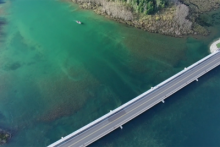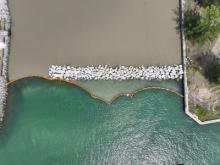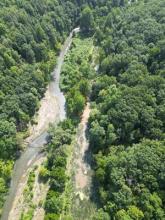The EPA Great Lakes National Program Office (GLNPO) celebrates significant progress in the Maumee Area of Concern (AOC) through the implementation of 17 habitat restoration projects
The EPA Great Lakes National Program Office (GLNPO) celebrates significant progress in the Maumee Area of Concern (AOC) through the implementation of 17 habitat restoration projects
The US Army Corps of Engineers, EPA, NYS Department of Environmental Conservation, and local partners have reached a significant milestone by beginning the construction of a multi-year coastal wetland habitat restoration project in the Buffalo Outer Harbor Slip #3. The project uses clean sediment dredged from the navigation channel to create wetland habitat that will benefit native plants, fish, and birds and the local community.
The US Army Corps of Engineers, EPA, NYS Department of Environmental Conservation, and local partners have reached a significant milestone by beginning the construction of a multi-year coastal wetland habitat restoration project in the Buffalo Outer Harbor Slip #3. The project uses clean sediment dredged from the navigation channel to create wetland habitat that will benefit native plants, fish, and birds and the local community.










